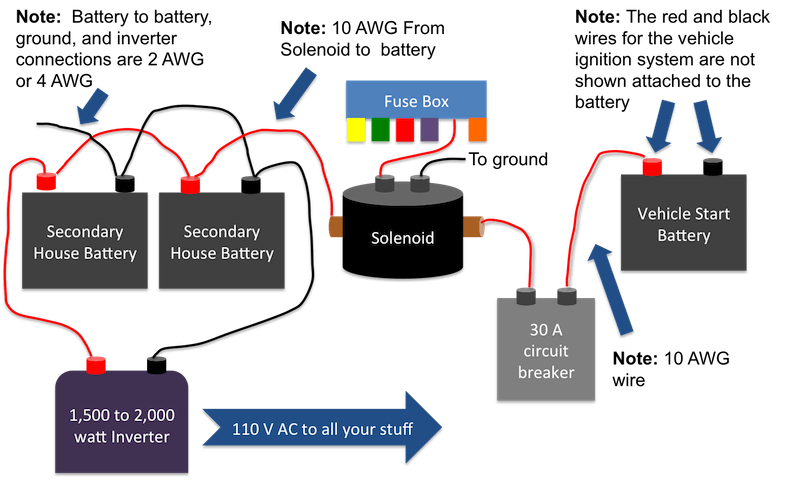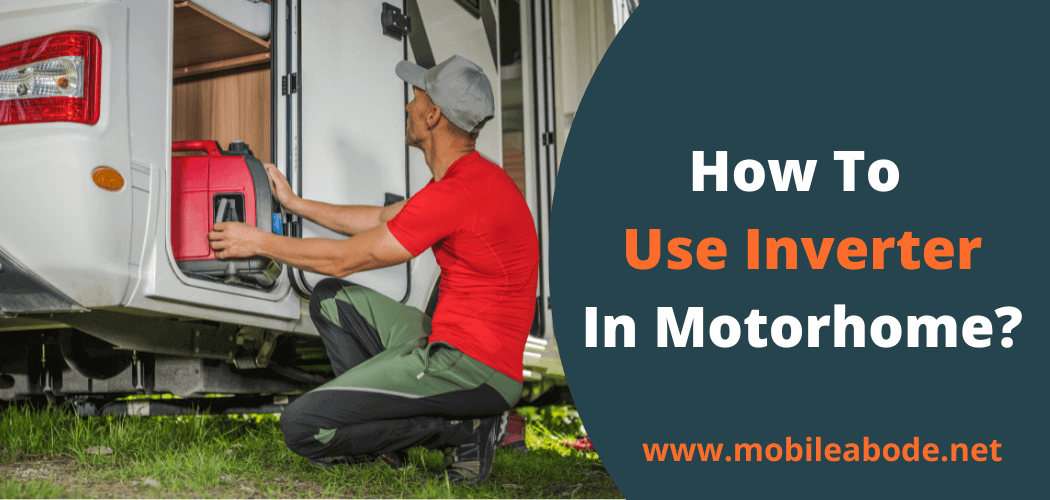Do you own a motorhome or RV? If so, did you know that you can use an inverter to power your appliances while on the road?
Inverters are a great way to provide backup power in case of an emergency, and they can also come in handy for powering smaller appliances like TVs and fans.
Keep reading for more information on how to use an inverter in Motorhome/RV!
What is an inverter and what does it do in a motorhome?
Inverters are an essential piece of equipment for anyone who enjoys spending time in their RV or motorhome. They take the DC power from your batteries and turn it into AC outlets that you can use to power your appliances. But inverters come in all shapes and sizes, so which one is right for you and how to use it?
In this post, we’ll show you how to set it up once you’ve got it!
How Do I Use Inverter In Motorhome/RV/Camper?
There are a few different ways that you can use an inverter in your Motorhome or RV.
- If you have an RV with a generator, you can use the inverter to power your appliances while the generator is running.
- f you have an RV with solar panels, you can use the inverter to power your appliances while the sun is shining.
- If you have an RV with both a generator and solar panels, you can use the inverter to power your appliances while either the generator is running or the sun is shining.
- If you have an RV with neither a generator nor solar panels, you can use the inverter to power your appliances by connecting it directly to your batteries.
Here is a Video about How to Use inverter in RV/Motorhome.
Some things you need to know before using an inverter in my Motorhome or RV?
There are a few things you need to know before using an inverter in your Motorhome or RV.
- Make sure the inverter is properly grounded.
- Do not use the inverter in wet conditions.
- Make sure the batteries are properly charged before using the inverter.
- Do not overload the inverter.
- If possible, use a battery charger to keep the batteries topped off while they’re being used.
Now that you know how to use an inverter in your Motorhome or RV, you can enjoy all the comforts of home while you’re on the road!
5 Tips for keeping your inverter running smoothly
Here are a few tips to keep your inverter running smoothly.
- Keep the inverter clean and free of dust and dirt.
- Inspect the inverter regularly for any signs of damage.
- If you notice anything wrong with the inverter, have it serviced by a qualified technician.
- Store the inverter in a cool, dry place when not in use.
- Follow the manufacturer’s instructions for using and maintaining the inverter.
By following these simple guidelines, you can ensure that your inverter will provide you with years of trouble-free service. And that means you can enjoy all the comforts of home while you’re on the road!
5 Benefits of Using an Inverter In a Motorhome/RV?
There are many benefits of using an inverter in a motorhome or RV. Some of these benefits include:
- Inverters provide backup power in case of an emergency.
- Inverters can be used to power smaller appliances like TVs and fans.
- Inverters are a great way to conserve battery power.
- Inverters can extend the life of your batteries.
- Inverters are relatively easy to install and use.
As you can see, there are multiple advantages of using an inverter in a motorhome or RV. If you’re looking for a way to improve your RVing experience, an inverter is a great option!
How to connect inverter to motorhome battery?
There are a few different ways to connect an inverter to your motorhome battery. The most common method is to use jumper cables.

- First, you’ll need to identify the positive and negative terminals on the inverter.
- Then, you’ll need to attach the positive cable to the positive terminal on the inverter and the negative cable to the negative terminal on the inverter.
- Finally, you’ll need to connect the other end of the cables to the corresponding terminals on your battery.
Once you’ve connected the inverter to your battery, you’ll be able to power your appliances and devices!
If you have any questions about using an inverter in your RV or motorhome, feel free to comment to Us. We’re always happy to help!
Does RV inverter charge battery?
An RV inverter can be used to charge your batteries, but it’s not the most efficient way to do so. If you’re looking for a way to charge your batteries quickly and efficiently, we recommend using a dedicated battery charger.
A battery charger is specifically designed to charge batteries, and it will do so much faster than an inverter. In addition, a battery charger will prolong the life of your batteries by preventing them from being overcharged.
How long does it take an RV inverter to charge the battery?
It depends on the size of your battery and the wattage of your inverter. A general rule of thumb is that it takes about 10-12 hours to charge a 100-amp hour battery with a 1000-watt inverter.
Of course, this is just a rough estimate. The actual time it takes to charge your battery will vary depending on several factors, including the age and condition of your battery, the temperature, and how much power you’re using while the inverter is charging the battery.
Is it OK to leave RV plugged in all the time?
Yes, it’s perfectly fine to leave your RV plugged in all the time. We recommend doing so!(terms)
By leaving your RV plugged in, you’ll be able to keep your batteries charged and maintain a constant power supply. This is especially important if you use your RV frequently or live in it full-time.
Of course, you’ll need to make sure that you’re plugged into a power source that can handle the amount of power your RV uses. Otherwise, you could overload the circuit and cause a fire. But as long as you’re plugged into a safe power source, you’ll be fine!
How do I know if my RV inverter is working?
There are a few different ways to test whether your RV inverter is working.
- One of the simplest methods is to plug a small appliance or device into the inverter and see if it powers on.
- Another method is to use a multimeter to test the voltage at the inverter’s terminals. If the voltage is within the range specified by the manufacturer, then the inverter is working properly.
- Finally, you can also test the inverter by plugging it into a power source and measuring the current draw. If the current draw is within the range specified by the manufacturer, then the inverter is working properly.
How to troubleshoot common problems with the inverter?
If you’re having trouble with your inverter, here are a few tips that may help:
- First, make sure that the inverter is properly connected to your battery and power source.
- Second, check the manufacturer’s specifications to make sure that the inverter is compatible with your RV or motorhome.
- Third, check the inverter’s fuse to make sure that it hasn’t blown.
- Fourth, try resetting the inverter by disconnecting it from the power source and then reconnecting it.
- Fifth, if you’re still having trouble, you may need to replace the inverter.
Hopefully, these tips will help you troubleshoot any problems you’re having with your inverter.
Conclusion:
If you are looking for a way to power your RV or motorhome while on the road, an inverter is a great option. By using an inverter, you can convert the DC power from your vehicle’s battery into AC power that can be used to run appliances and electronics.
Inverters come in a variety of sizes and wattages, so it is important to choose one that is suited to your needs. We hope this article has helped you understand how inverters work and given you some ideas about which one might be best for you.

